Black Growler Steam Vent doesn’t get much press these days, but it was once held up as a preeminent feature in the Norris Geyser Basin.
According to Aubrey L. Haines, writing in Yellowstone Place Names: Mirrors of History, the feature was named “Black Geyser” in 1878 by geologist A.C. Peale of the Hayden Geological Survey. The current name is attributed to guide, outfitter and hotelier G.L. Henderson, who, if he did not originate the name, popularized Black Growler.
Praise
As noted, Black Growler once received glowing praise from park outfitters and guide writers like A.B. Guptill, writing in the 1898 Haynes Guide:
The Black Growler, with a chimney-shaped opening, is located quite near the road, at the head of a gulch leading from the plateau. Very little water is thrown out, while a large quantity of steam is constantly escaping, producing a peculiar sound. The deposit surrounding the edge of the crater is, at times, of inky blackness, evidently the origin of its name. The water is not clear and has a strong odor of sulphur, which is probably the cause of its turbidity. The geyser, a few feet to the north, known as the “Hurricane,” is similar to the Black Growler in the character of its eruptions, which are very irregular, and destructive to surrounding vegetation and foliage.
The “Hurricane,” incidentally, is now known as Hurricane Vent. According to Lee H. Whittlesey, the feature underwent a spate of changes in the 1880s. It’s fair to assume it quieted down sometime after 1898, based on Guptill’s description, although he kept the Black Growler description for the 1902 Haynes Guide.
The 1912 Haynes Guide, compiled by Jack Ellis Haynes, downplays Black Growler’s importance, explicitly referring to it as a steam vent:
Black Growler Steam Vent attracts much attention; it roars constantly and emits great volumes of steam. The deposit around the crater is quite black in places, which fact accounts for its name. The vent a few yards north of the Black Growler is known as the Hurricane; it is quite similar but not so violent as the former.
Smoking Hot
In his place names book, Haines notes a popular activity undertaken by visitors to the basin who wished to test Black Growler’s mettle, so to speak:
Through the years up to 1928, the Black Growler retained its guide book position as one of the preeminent features of Norris Geyser Basin. As it shifted increasingly toward activity as a superheated steam vent, there was the added interest of a visual demonstration. Its roaring column of invisible stea, escaping at a temperature of 284 degrees Fahrenheit (discernable, on a hot summer day, only by the distortion of objects viewed through it) would be made visible by blowing tobacco smoke toward the vent—dangerous, of course, but it did outline escaping steam by the vapor condensing on the smoke particles. Another interesting demonstration consisted of exposing a stick in the orifice for a few minutes, which resulted in carbonizing the wood, leaving no doubt about the heat latent in the steam.
Changing Location
As with all things in Norris, nothing lasts forever. As Haines notes, Black Growler declined significantly after 1928, moving downslope for a few seasons before popping up in its current location as Black Growler Steam Vent—a pale imitation of its hotter counterpart upslope.
It’s interesting to consider Black Growler’s location in the basin, especially alongside its more famous neighbors. Consider, for instance, the above postcard from the Detroit Photographic Co, produced in 1902. To the left is Constant Geyser, sometimes referred to as Minute Man Geyser in this period, although today it’s referred to as Constant. Purportedly, Black Growler is somewhere in the picture too. It could be Black Growler is represented by one of the distant steam plumes, which would accord with its place on maps (such as the one below, published in the 1912 Haynes Guide).
It would be disappointing if the company believed Black Growler to be the steam vent just to the right of that plank walk. Based on the date of publication and consultations of the 1912 map, we believe the small feature to the right is Whirligig Geyser.
At best, the postcard caption is somewhat misleading. At worst, it’s outright wrong.
Today
The changing location of Black Growler is also a matter of orientation. In the era when Black Growler was a big draw, the road ran through most of the basin, bringing visitors much closer to the features than today’s boardwalk system. That’s all for the better, for the safety of both people and the features themselves. Compare the 1912 map above with the current one above, which shows how markedly different Norris’ layout was in the stagecoach/early auto era.
Also note that the 1912 runs south to north instead of the usual north to south arrangement.
 Yellowstone Insider Your Complete Guide to America's First National Park
Yellowstone Insider Your Complete Guide to America's First National Park
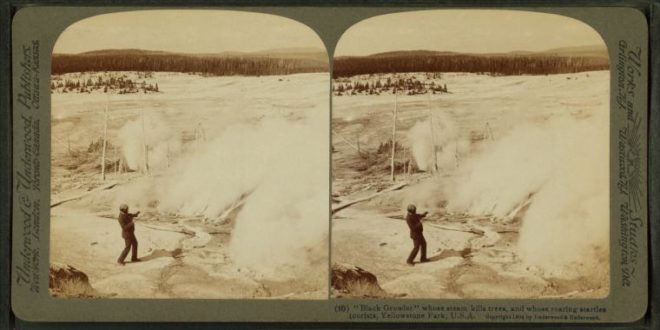
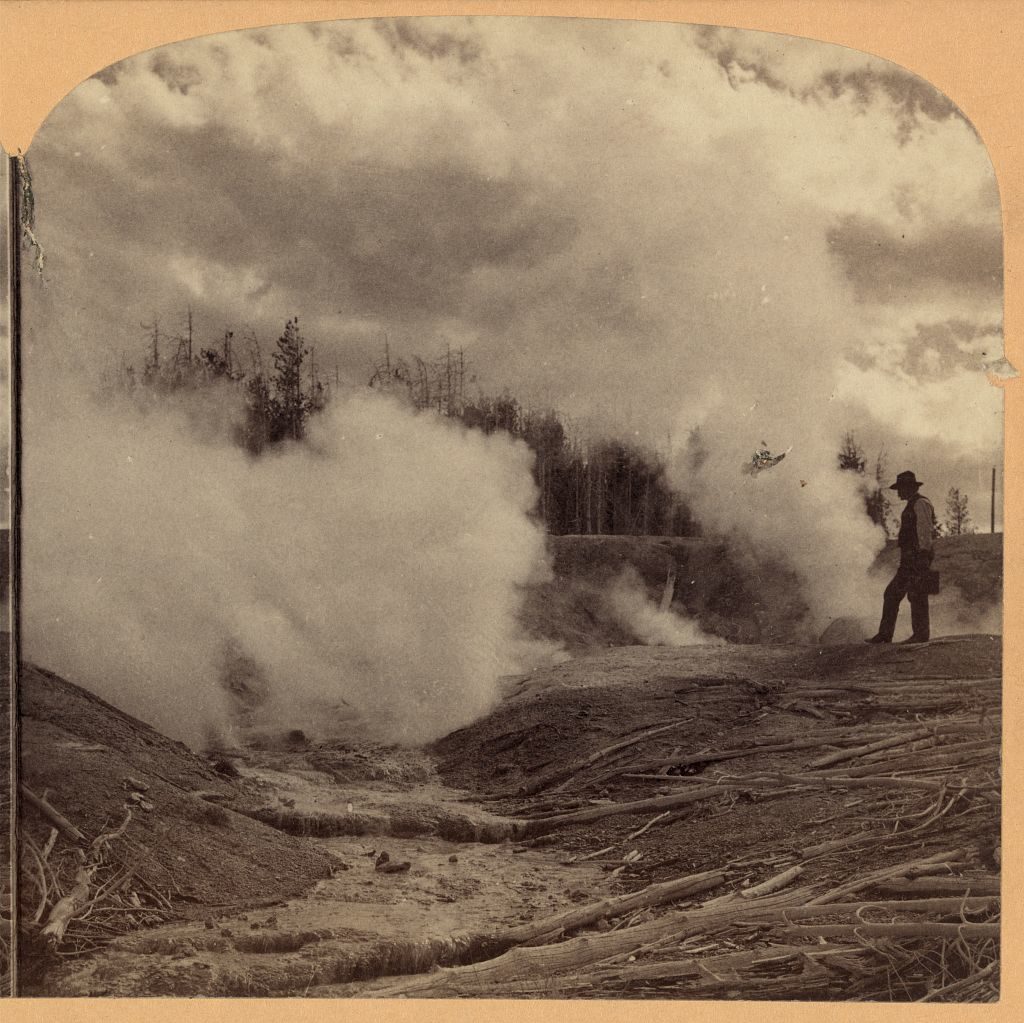
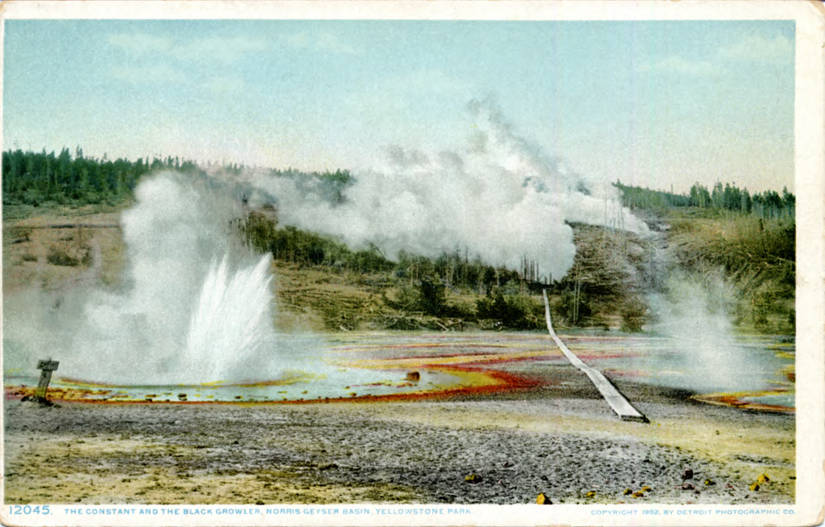
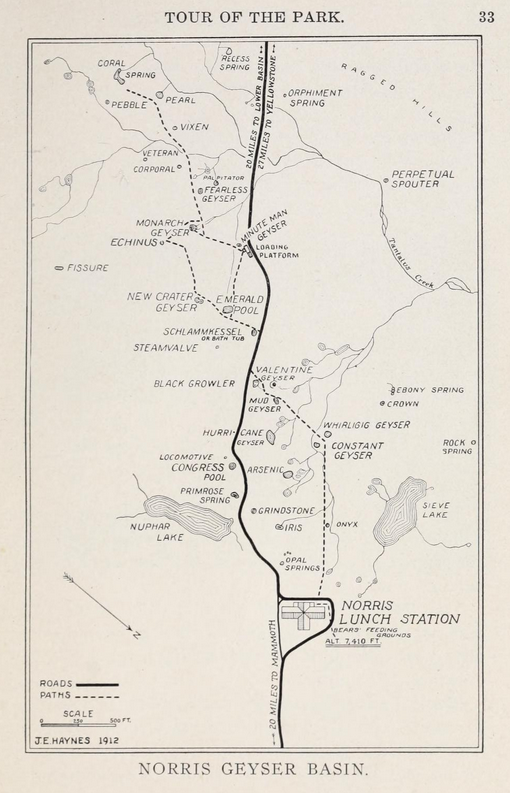
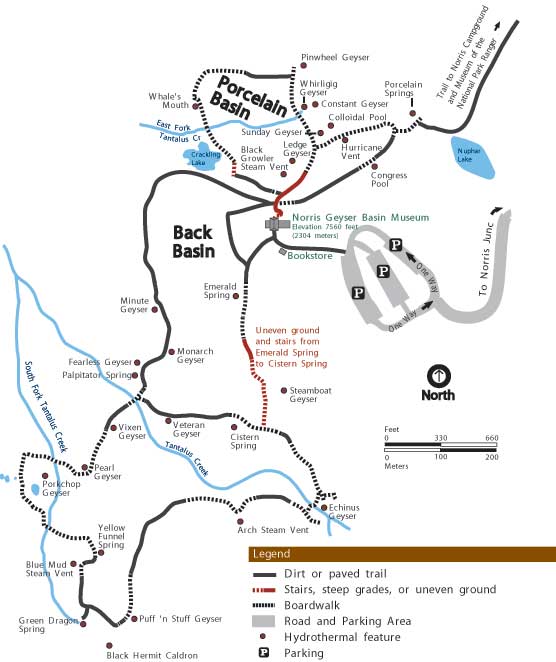

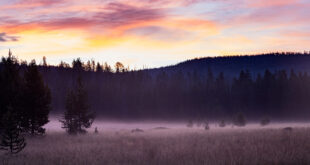
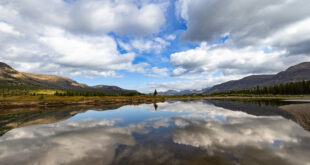
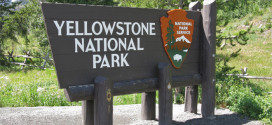
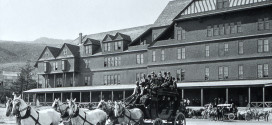
You must be logged in to post a comment.